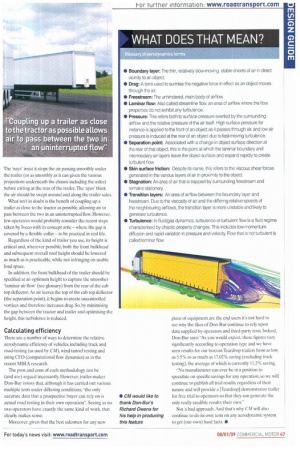AT DOES THAT MEAN?
Page 47

If you've noticed an error in this article please click here to report it so we can fix it.
• Boundary layer: The thin, relatively slow-moving, stable sheets of air in direct vicinity to an object.
• Drag: A term used to surmise the negative force in effect as an object moves through the at • Freestream: The unhindered, main body of airflow.
• Laminar flow: Also called streamline flow, an area of airflow where the flow properties do not exhibit any turbulence.
• Pressure: This refers both to surface pressure exerted by the surrounding airflow and the relative pressure of the air itself. High surface pressure for instance is applied to the front of an object as it passes through air, and low air pressure is induced at the rear of an object due to fast-moving turbulence.
• Separation point: Associated with a change in object surface direction at the rear of that object, this is the point at which the laminar boundary and intermediary air layers leave the object surface and expand rapidly to create turbulent flow, • Skin surface friction: Despite its name, this refers to the viscous shear forces generated in the various layers of air in proximity to the object • Stagnation: An area of air that is trapped by surrounding freestream and remains stationary.
• Transition layers: An area of airflow between the boundary layer and freestream. Due to the viscosity of air and the differing relative speeds of the neighbouring airflows, the transition layer is more unstable and likely to generate turbulence.
• Turbulence: In fluid/gas dynamics, turbulence or turbulent flow is a fluid regime characterised by chaotic property charges. This includes low-momentum diffusion and rapid variation in pressure and velocity. Pow that is not turbulent is called laminar flow.








































































































































